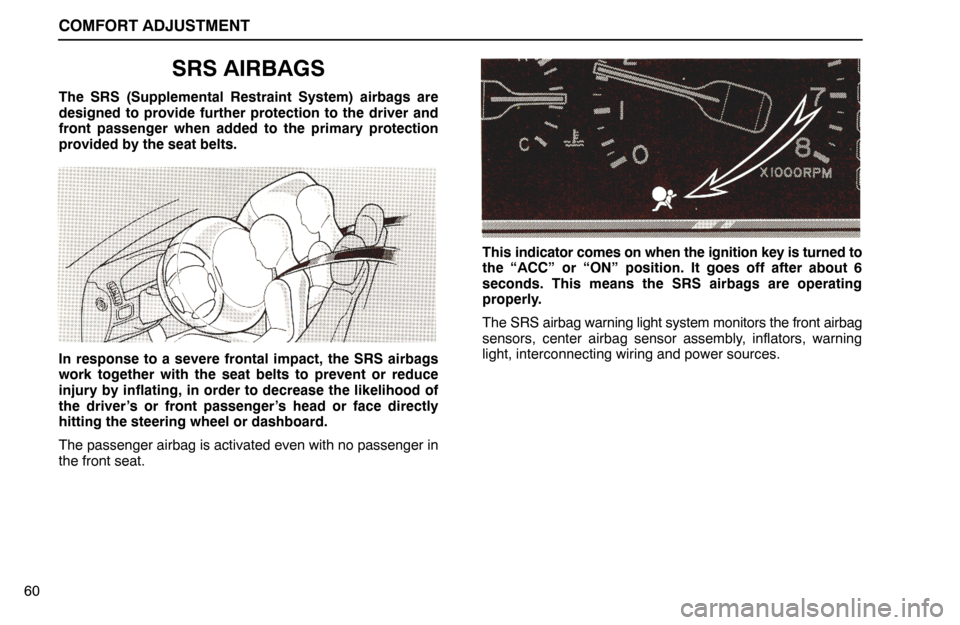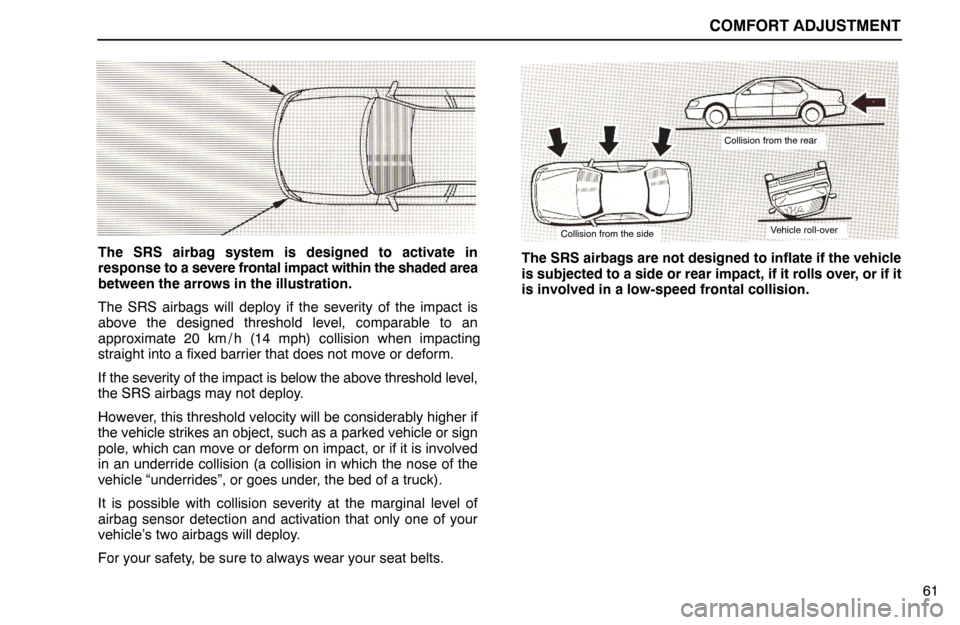COMFORT ADJUSTMENT
60
SRS AIRBAGS
The SRS (Supplemental Restraint System) airbags are
designed to provide further protection to the driver and
front passenger when added to the primary protection
provided by the seat belts.
In response to a severe frontal impact, the SRS airbags
work together with the seat belts to prevent or reduce
injury by inflating, in order to decrease the likelihood of
the driver’s or front passenger’s head or face directly
hitting the steering wheel or dashboard.
The passenger airbag is activated even with no passenger in
the front seat.
This indicator comes on when the ignition key is turned to
the “ACC” or “ON” position. It goes off after about 6
seconds. This means the SRS airbags are operating
properly.
The SRS airbag warning light system monitors the front airbag
sensors, center airbag sensor assembly, inflators, warning
light, interconnecting wiring and power sources.
COMFORT ADJUSTMENT
61
The SRS airbag system is designed to activate in
response to a severe frontal impact within the shaded area
between the arrows in the illustration.
The SRS airbags will deploy if the severity of the impact is
above the designed threshold level, comparable to an
approximate 20 km / h (14 mph) collision when impacting
straight into a fixed barrier that does not move or deform.
If the severity of the impact is below the above threshold level,
the SRS airbags may not deploy.
However, this threshold velocity will be considerably higher if
the vehicle strikes an object, such as a parked vehicle or sign
pole, which can move or deform on impact, or if it is involved
in an underride collision (a collision in which the nose of the
vehicle “underrides”, or goes under, the bed of a truck).
It is possible with collision severity at the marginal level of
airbag sensor detection and activation that only one of your
vehicle’s two airbags will deploy.
For your safety, be sure to always wear your seat belts.
Collision from the rear
Vehicle roll-overCollision from the side
The SRS airbags are not designed to inflate if the vehicle
is subjected to a side or rear impact, if it rolls over, or if it
is involved in a low-speed frontal collision.

